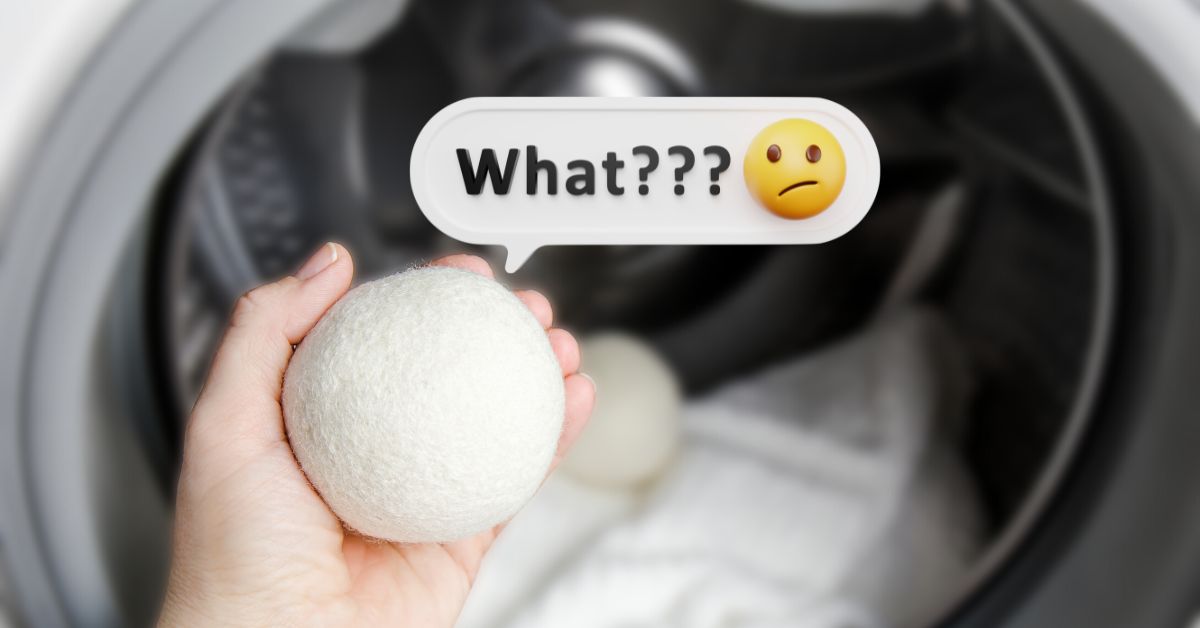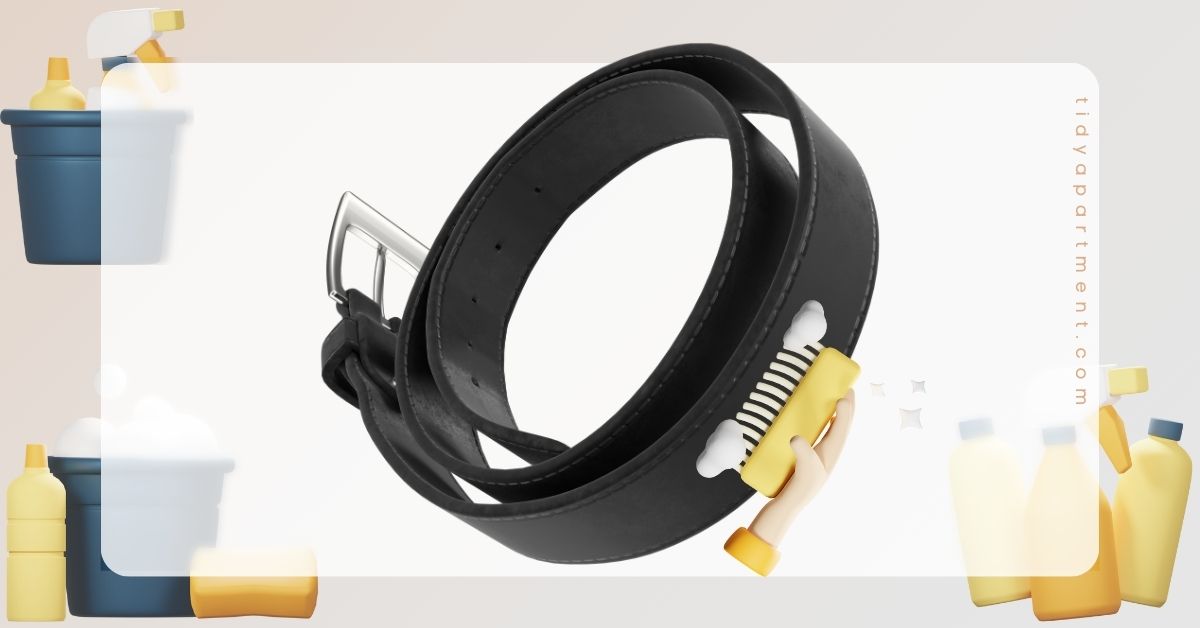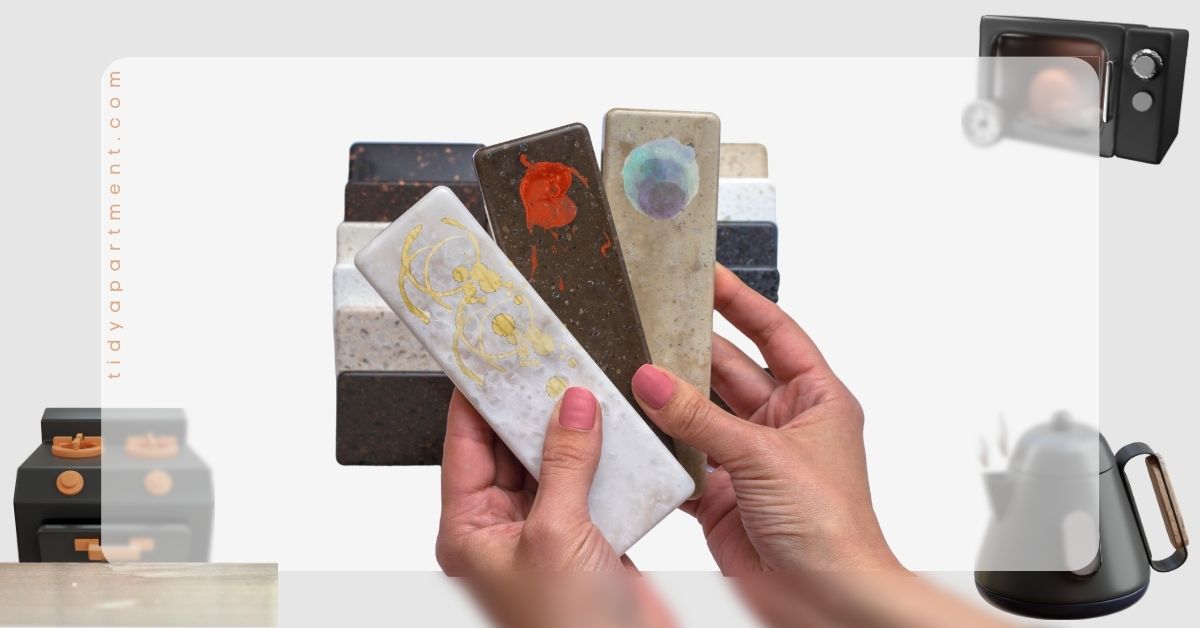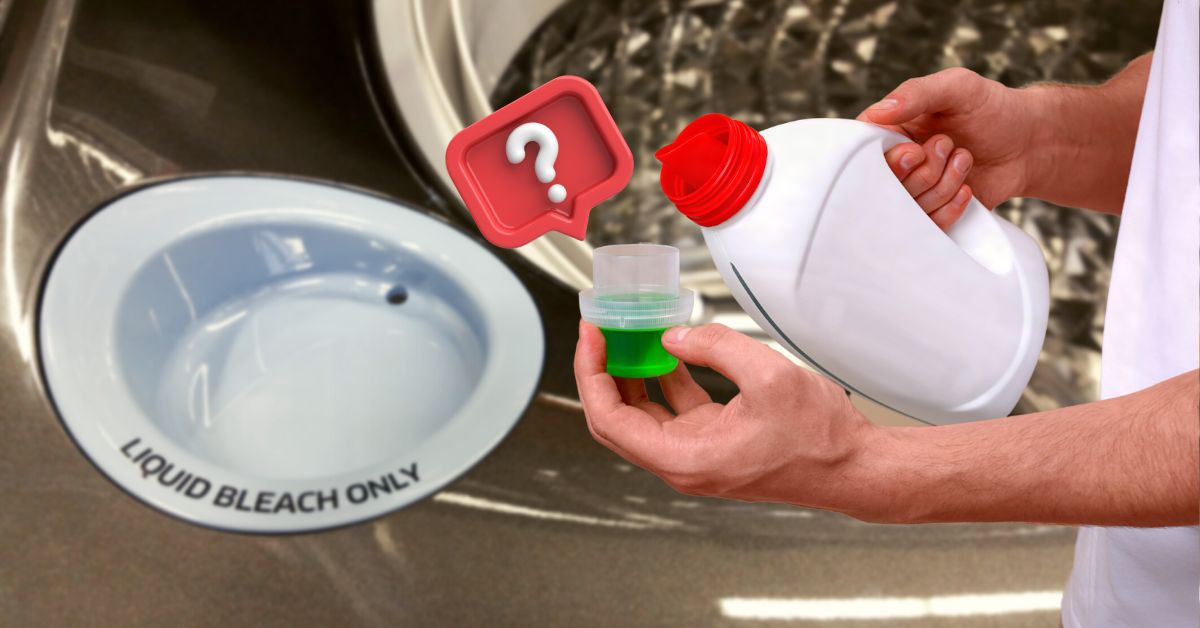Dryer balls are chemical-free balls that improve air circulation and prevent clothes from clumping together, facilitating better air circulation. Dryer balls reduce drying time, clumping of clothes, and static cling while preventing wrinkles. In addition, dryer balls also soften the clothes.
Dryer balls don’t leave any residue, which makes them a safer option than fabric softeners and dryer sheets. Another benefit of dryer balls is that they are easy to use. You don’t have to be an expert or follow specific instructions to use them. Simply tossing them into the dryer during the drying cycle solves the purpose.
Related: Dryer balls vs. dryer sheets.
Page Content
What Are Dryer Balls? What Do They Do?
Dryer balls are spherical structures designed to be placed in a dryer with wet clothes to improve the drying process. The main ingredient that goes into the making of dryer balls is tightly compacted wool. However, you can also find dryer balls made from plastic or rubber.
- Reduce Drying Time: By agitating and separating the clothing items in the dryer, dryer balls improve air circulation, which leads to faster drying times.
- Soften Fabrics: Dryer balls made of wool can soften clothes as they tumble with the laundry.
- Reduce Static Cling: Fabrics like synthetic materials that are prone to static. Dryer balls reduce static cling by physically separating fabric, breaking up static charges, and promoting better airflow in the dryer.
- Eco-Friendly: Dryer balls can be reused for multiple loads, unlike fabric softeners and dryer sheets. Dryer balls can last up to 1000 cycles.
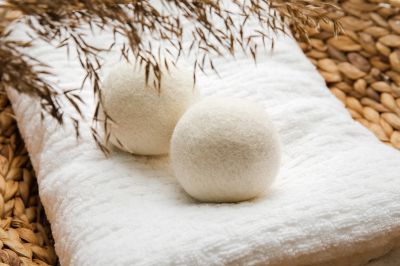
What are the Types of Dryer Balls?
Two types of dryer balls are available: Natural (made from wool) and Synthetic (made from plastic). Dryer balls made from rubber fall into both categories- natural and synthetic.
1. Wool Dryer Balls
These are eco-friendly dryer balls with high durability. Wool dryer balls are excellent for absorbing moisture, which helps reduce the drying time. Adding essential oils to wool dryer balls helps sweet-scented the clothes with a fresh aroma.
The wool fibers in these dryer balls ensure low noise inside the dryer drum. Wool dryer balls can come to your aid even after unraveling.
Related: How to clean wool dryer balls?
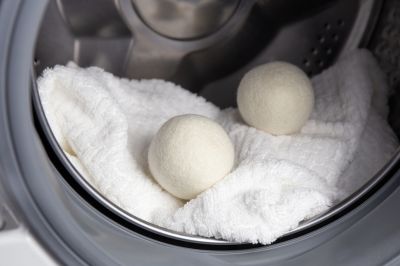
2. Plastic and Rubber Dryer Balls
Plastic and rubber dryer balls are more durable than wool dryer balls. In addition, they won’t unravel, unlike the wool dryer balls. They don’t pose the risk of fibers snagging in the dryer and damaging the machine.
You may find some plastic and rubber dryer balls with spikes or bumps. These spikes or bumps improve the performance of the dryer balls. They help keep clothes apart from each other as they roll in the dryer. However, they may be more noisy than the wool dryer balls.

3. Tennis Ball as Dryer Ball
You can also use tennis balls in the absence of regular dryer balls. We recommend using brand-new tennis balls due to their cleanliness. However, tennis balls are prone to transferring their color onto clothes and staining them.
Always ensure tennis balls do not bleed their color before you decide to use them as dryer balls. Tennis balls also make a lot of noise compared to wool dryer balls.
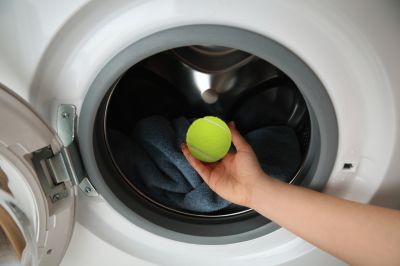
Tennis balls are hard and can damage clothes if used with delicate fabrics.
How to Use Dryer Balls to Reduce Static?
Using dryer balls is a straightforward process. Generally, three dryer balls suffice for an average laundry load. Place them evenly in between the laundry loads before starting the dry cycle. Add an extra dryer ball if the laundry is above average.

Step 1: Load the Dryer
Place your wet clothes in the dryer. Do not overload the dryer, as dryer balls require space to work efficiently.
Step 2: Add Dryer Balls
Add three dryer balls in the dryer for an average laundry load to effectively reduce drying time and wrinkles.
Step 3: Start the Dryer
Close the dryer door and start the drying cycle as usual. There’s no harm in using dryer balls regardless of the dryer type, be it gas or electric.
Step 4: Remove and Store
After the drying cycle is complete, you can reuse or store the dryer balls for the next load. Before storing the dryer balls, thoroughly clean and dry them.
Conclusion
Dryer balls help to reduce static cling and clumping, drying time, and prevent wrinkling. Dryer balls are usually made of wool, rubber, or plastic.
Wool dryer balls are an eco-friendly alternative to dryer sheets and fabric softeners. Rubber and plastic balls are more durable than wool dryer balls but make noise while moving in the dryer.
Some rubber and plastic balls have spikes or bumps that improve their performance. There’s no risk of unraveling fibers with rubber and plastic dryer balls.
Related: 7 Substitutes for fabric softeners?
